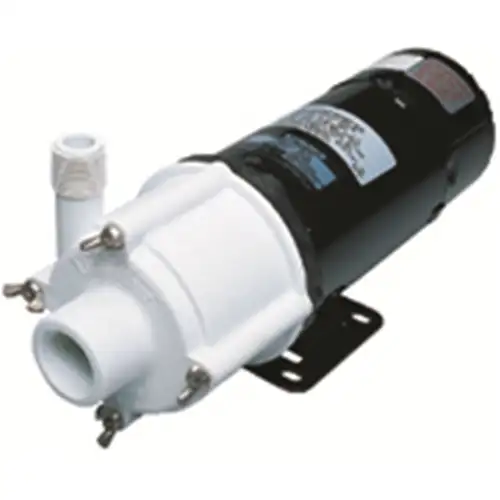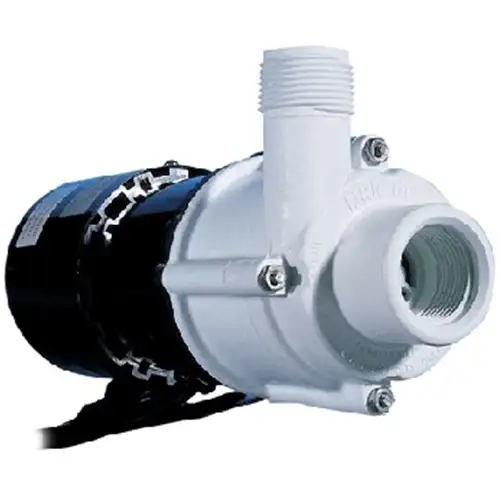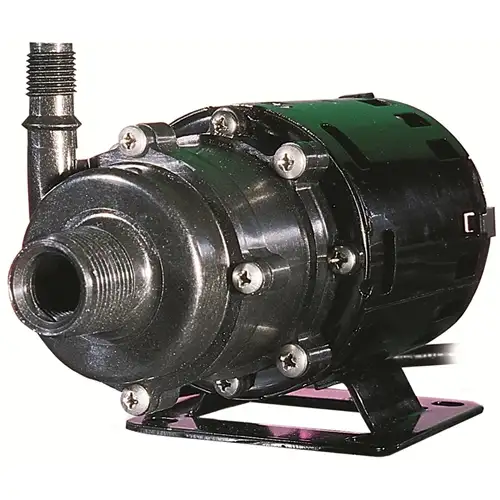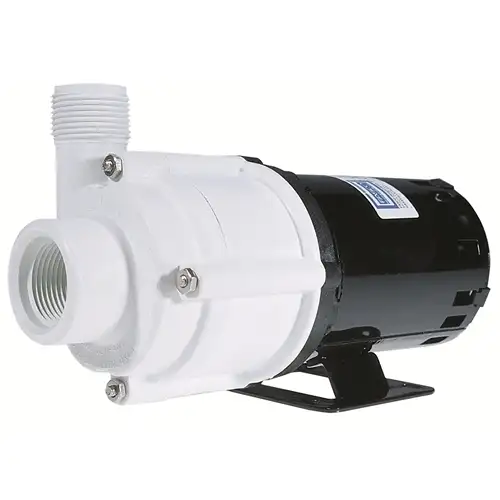Little Giant 582506 magnetic drive aquarium pump is perfect for circulating mildly corrosive acids, alkalis, brine, solvents, plating solutions and sterile solutions. It is widely used in chemical processing, pharmaceuticals and water treatment applications. This pump is installed externally to the aquarium and filtration systems and is usually mounted beneath the aquarium in the cabinet.
Features:
- Little Giant 582506 pump is ideal for in-line saltwater and freshwater aquarium canister filter systems.
- This aquarium pump uses a magnetic field to rotate without a motor shaft, reducing the risk of leaks and corrosion.
- It has a thermally protected motor that is CSA-certified and corrosion-resistant.
- This non-submersible pump does not self-prime and must be started with the volute intake below the liquid level.
Frequently Asked Questions:
Q. How do I maintain my aquarium pump?
A.
- Clean the unit periodically to remove debris and prevent clogging.
- Additionally, check the pump's impeller regularly for any signs of wear or damage.
Q. Can Little Giant 582506 pump be used in both freshwater and saltwater aquariums?
A. Yes, you can use Little Giant 582506 pump (4-MDQ-SC) magnetic drive pump for both freshwater and saltwater circulation & filtration.
Q. How do I reduce noise from my aquarium pump?
A. To reduce noise, place your aquarium pump on a stable surface. You can also place a rubber mat, foam padding or any other soft material underneath the pump to dampen the vibrations.
Q. What are the benefits of a magnetic drive pump in chemical transfer applications?
A.
- They do not require seals or gaskets, making them ideal for handling hazardous materials safely.
- Chemical transfer magnetic drive pumps are more energy efficient than traditional pumps because they do not use mechanical seals that cause friction and heat.
- They are more durable and can handle corrosive chemicals and fluids with high viscosity.
Q. How do I calculate the appropriate flow rate for my aquarium pump?
A. To calculate the appropriate flow rate, consider factors like the tank size, the types of inhabitants, and the desired water movement. As a general rule, aim for a flow rate that allows gentle water movement without causing excessive turbulence or stress to your aquatic inhabitants.
 Change Country
Change Country





